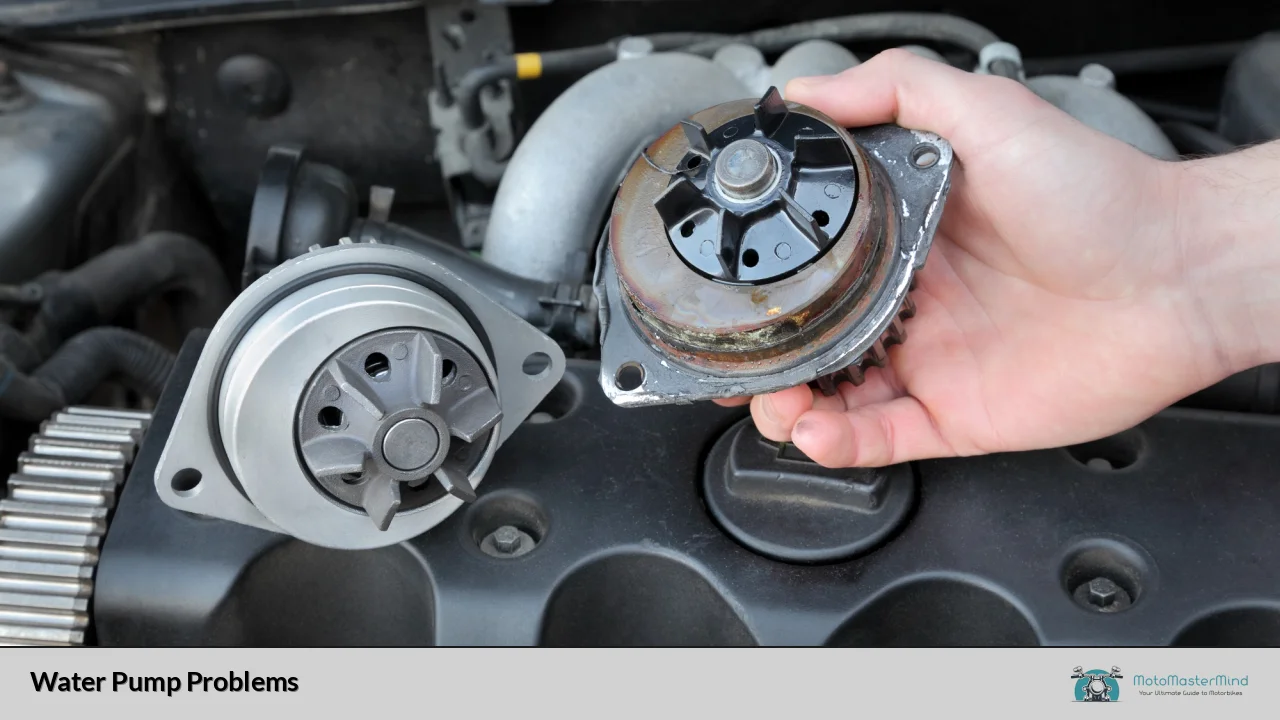Introduction: Water pump problems can quickly turn a smooth-running household into a stressful situation. Dealing with issues like reduced water pressure, strange noises, or complete pump failure can disrupt everyday tasks and leave you feeling frustrated. In this article, we will delve into common water pump problems, their causes, and potential solutions, allowing you to regain control over your water supply.
Low Water Pressure: Are you noticing a decrease in water pressure when you turn on the taps? This could be an indication of a water pump problem. One possible cause is a clogged intake screen, restricting the flow of water into the pump. Regularly cleaning or replacing the intake screen can help resolve this issue. Additionally, damaged or worn-out impellers within the pump may affect its ability to push water effectively. In such cases, replacing the impeller is often necessary.
Noisy Operation: Is your water pump generating unusual sounds that are disrupting the tranquility of your home? Excessive noise can be attributed to various factors, such as loose components, cavitation, or air trapped inside the system. Check for loose screws, bolts, or brackets and tighten them appropriately. Cavitation occurs when air bubbles form and collapse within the pump, leading to a rattling or grinding noise. Adjusting the water level or installing a pressure regulator can mitigate this issue. Finally, bleeding the system to remove trapped air can restore quiet operation.
Constant Cycling: Does your water pump cycle on and off frequently, even when water is not being used? This could be a sign of a faulty pressure switch or a waterlogged pressure tank. Begin by checking the pressure switch settings and adjusting them if necessary. If the issue persists, inspect the pressure tank for waterlogging, which occurs when the air bladder fails. Replacing the pressure tank or recharging the bladder can solve this problem.

Lack of Water Flow: If your water pump fails to deliver any water at all, it could be due to a range of issues. Start by checking the power supply and ensuring that the pump is receiving adequate electricity. A tripped circuit breaker or a blown fuse might be the culprit. Additionally, a malfunctioning control box or a faulty motor can lead to a lack of water flow. Consulting a professional technician may be necessary to diagnose and resolve these complex problems.

Conclusion: Understanding common water pump problems empowers homeowners to identify and address issues promptly, restoring normalcy to their water systems. By recognizing symptoms like low water pressure, noise, constant cycling, or lack of water flow, you can take appropriate action, whether it involves simple maintenance tasks or seeking professional assistance. Remember, a well-maintained water pump ensures a steady and dependable water supply for your household needs.
Water Pump Woes: How Aging Infrastructure Is Causing Costly Problems
Have you ever wondered about the hidden struggles behind the scenes of water supply systems? The truth is, aging infrastructure is silently wreaking havoc on our water pumps, leading to a host of costly problems. In this article, we will delve into the details of this pressing issue and shed light on its implications for both communities and individuals alike.
Picture this: an old water pump tirelessly working day and night, trying to provide a steady flow of clean water to households and businesses. Over time, however, wear and tear take their toll, resulting in a range of detrimental consequences. One such consequence is reduced efficiency. As water pumps age, they become less effective at pumping water, leading to decreased water pressure and flow rates. This not only affects the convenience of daily activities like showering or washing dishes but can also impact crucial industrial processes that rely on adequate water supply.
Furthermore, aging infrastructure increases the likelihood of breakdowns and failures. Imagine waking up one morning, ready to start your day, only to find that there’s no water flowing from your taps. A malfunctioning water pump could be the culprit, leaving you without a vital resource. Not only does this inconvenience individuals, but it can also disrupt entire communities when water supply interruptions occur on a larger scale.
The financial ramifications of these issues are substantial. Repairing or replacing aging water pumps can be a costly endeavor, straining the budgets of municipalities and utility companies. Moreover, the disruptions caused by failing water pumps can lead to financial losses for businesses that depend on a reliable water supply. These expenses can quickly add up, creating a burden that affects everyone, from taxpayers to consumers.
From Droughts to Floods: Water Pump Failures Magnify Environmental Challenges
Water is the lifeblood of our planet. It sustains us, nourishes our crops, and supports a myriad of ecosystems. Yet, the delicate balance of water availability is increasingly under threat due to a range of environmental challenges. One such challenge is the magnification of these issues caused by water pump failures. In this article, we will explore the impact of water pump failures on environmental challenges, ranging from droughts to floods.
Imagine a parched landscape experiencing a severe drought. The absence of rainfall forces communities to rely heavily on water pumps to extract groundwater for their daily needs. However, when these pumps fail, it exacerbates the already dire situation. Without access to water, crops wither, livestock suffer, and human survival is jeopardized. The consequences are not limited to human populations alone; wildlife and fragile ecosystems also bear the brunt of water scarcity.
On the flip side, excessive rainfall can lead to devastating floods. During periods of heavy precipitation, efficient water management becomes crucial in mitigating flood risks. Water pumps play a vital role in draining excess water and preventing inundation. But what happens when these pumps malfunction? The consequences are disastrous. Floodwaters wreak havoc, submerging entire communities, damaging infrastructure, and posing significant threats to public safety. The inability to address these challenges promptly intensifies the impact and prolongs the recovery process.
Water pump failures can be attributed to various factors, including aging infrastructure, lack of maintenance, and inadequate investment in upgrading systems. Climate change further compounds these issues, as extreme weather events become more frequent and intense. Rising temperatures, shifting rainfall patterns, and increased stress on water resources contribute to the strain on water pumping systems.
To address these challenges, proactive measures are essential. Investing in robust infrastructure and regular maintenance programs can enhance the reliability of water pumping systems. Implementing advanced monitoring technologies can detect potential failures before they occur, enabling timely interventions. Furthermore, promoting sustainable water management practices, such as rainwater harvesting and efficient irrigation techniques, can help alleviate the pressure on water resources.
Water pump failures have far-reaching consequences for environmental challenges. From exacerbating drought conditions to intensifying flooding risks, these failures amplify the impact of already precarious situations. By prioritizing investment in infrastructure, adopting preventive measures, and embracing sustainable practices, we can mitigate the effects of water pump failures and safeguard our water resources for future generations. Let us take collective action to ensure a more resilient and sustainable water future.
Innovative Solutions in Sight: Cutting-Edge Technology Tackles Water Pump Problems
Intro: Water pumps play a crucial role in various industries, from agriculture to manufacturing. However, they often encounter problems that can disrupt operations and lead to substantial losses. Thankfully, advancements in technology have given rise to innovative solutions capable of addressing these challenges head-on. In this article, we will explore how cutting-edge technology is revolutionizing the water pump industry, providing efficient and reliable solutions.
Remote Monitoring: Keeping Pumps in Check Imagine having real-time access to vital information about your water pumps, regardless of your physical location. With remote monitoring systems, this is now possible. These cutting-edge solutions enable users to remotely monitor critical parameters such as pressure, temperature, and flow rate. By doing so, operators can detect anomalies instantly, allowing for prompt action before minor issues escalate into major problems. This technology saves time, resources, and ensures uninterrupted pump performance.
Predictive Maintenance: Anticipating Issues Before They Occur Traditional maintenance practices rely on reactive measures, waiting for a breakdown before taking action. However, with predictive maintenance, the game has changed. By utilizing advanced analytics and machine learning algorithms, this technology can analyze pump data to identify patterns and anticipate potential failures. By pre-emptively scheduling maintenance based on accurate predictions, downtime and costly repairs can be minimized, optimizing overall operational efficiency.
Energy-Efficient Motors: Powering Tomorrow’s Pumps The quest for sustainability has led to the development of energy-efficient motor technologies. These motors offer higher efficiency levels compared to their conventional counterparts, reducing energy consumption and operating costs. Incorporating intelligent control systems, these motors optimize power usage by adjusting speed and output based on demand. By embracing these state-of-the-art motors, businesses can contribute to environmental preservation while enjoying long-term savings.

Smart Pumping Systems: Automating Efficiency Enter the era of smart pumping systems, where artificial intelligence and automation take center stage. These intelligent systems utilize sensors, data analysis, and automated controls to achieve optimal pump performance. Through continuous monitoring, they can adjust pump operations in real-time, ensuring maximum efficiency while minimizing energy wastage. Moreover, these systems can adapt to varying conditions, offering a flexible solution for diverse applications.
Conclusion: As technology continues to advance, the water pump industry is witnessing a transformation driven by innovation. Remote monitoring, predictive maintenance, energy-efficient motors, and smart pumping systems are revolutionizing how water pumps operate. These cutting-edge solutions empower businesses with greater control, enhanced efficiency, and reduced downtime. By embracing these innovations, organizations can overcome water pump problems, maximize productivity, and stay ahead in an ever-evolving landscape. The future of water pumps is indeed promising, with innovative solutions paving the way for a more efficient and sustainable world.
Behind the Scenes: The Hidden Impact of Water Pump Malfunctions on Everyday Life
Have you ever stopped to think about the intricate systems that silently work behind the scenes, ensuring our everyday lives run smoothly? One such system that often goes unnoticed is the water pump. While we go about our daily routines, water pumps play a vital role in supplying clean and safe water to our homes, offices, and communities. However, when these unsung heroes malfunction, the impact can be far-reaching, affecting not only our convenience but also our quality of life.
Imagine waking up one morning to find no water flowing from your faucet. It’s a scenario that can quickly turn into a frustrating reality when water pumps malfunction. From disrupted morning showers to delayed coffee brewing, the inconvenience caused by a faulty water pump becomes immediately apparent. But the consequences extend beyond personal inconveniences; entire neighborhoods, businesses, and public facilities can come to a standstill due to inadequate water supply, leading to widespread disruptions.
Water pump malfunctions can create a domino effect, impacting various aspects of our daily activities. Laundry, dishwashing, and cleaning become arduous tasks without a reliable water source. Restaurants struggle to provide meals and maintain sanitation standards. Schools and hospitals bear the brunt, with compromised hygiene conditions posing risks to students’ health and patient care. It becomes evident that the hidden impact of water pump malfunctions affects numerous areas of our lives.
Beyond the inconvenience and disruption, water pump malfunctions also have significant economic implications. Industries relying on water-intensive processes, such as manufacturing and agriculture, may face production delays or incur financial losses. Additionally, businesses that heavily rely on foot traffic, like car washes or swimming pools, suffer from reduced customer flow. The repair or replacement costs of malfunctioning water pumps can strain household budgets, exacerbating the financial burden on individuals.
To mitigate the hidden impact of water pump malfunctions, regular maintenance is crucial. Ensuring proper upkeep and prompt repairs can prevent costly breakdowns and proactively address potential issues. Collaborative efforts between homeowners, communities, and water management authorities can help identify and rectify problems before they escalate, ensuring a continuous supply of clean water for everyone.

